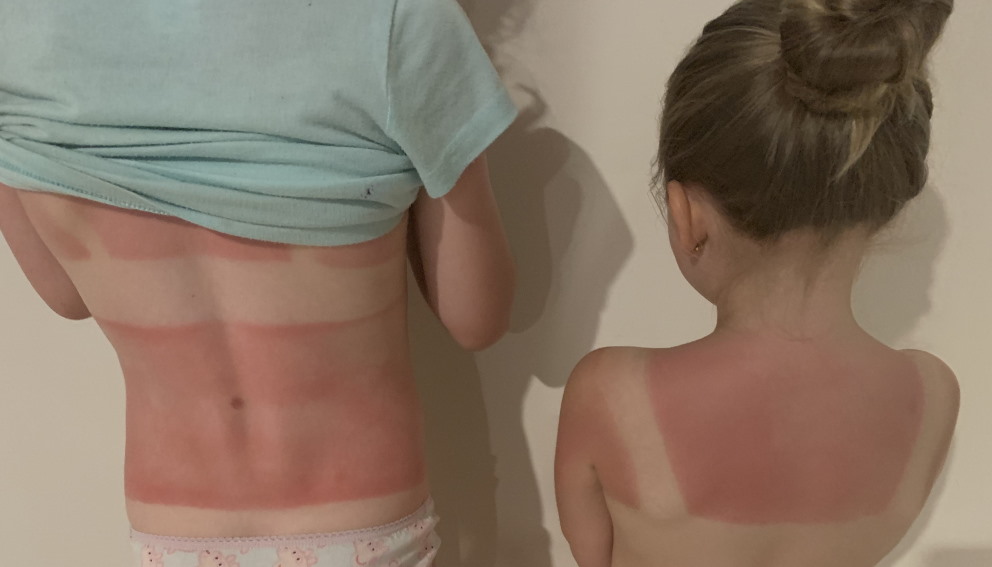Sunscreen laws put Aussies at risk as 'extreme heatwave' hits
- Written by Wendy White

A recent study found that the chemicals in some types of sunscreen break down more quickly than first believed, leaving unsuspecting swimmers only protected from the sun’s damaging ultraviolet (UV) rays for as little as 30 minutes.
The study, titled Stability and removal of selected avobenzone’s chlorination products*, shows one of the chemical sunscreen agents, called Butyl Methoxydibenzoylmethane, or avobenzone, breaks down more quickly than previously thought when used in chlorinated water and with ultraviolet light present.
Another FDA study has found that sunscreen chemicals reach our bloodstream. **
Researchers at the Food and Drug Administration found that people who regularly use certain sunscreens may be absorbing higher than safe levels of active ingredients into their bodies.
Skin care expert and MooGoo CEO Melody Livingstone says not listing ingredients on sunscreen labels makes it impossible to make informed choices about what you are using on your body.
“There’s never been a more important time to really educate ourselves on what is in the sunscreens we so heavily rely on,” Livingstone says.
“Many people seem to assume that SPF is the only important thing when choosing a sunscreen and don’t tend to be concerned with what it’s made of.
“Especially when you are applying and reapplying sunscreen all over the body – and using it on babies and children.
“Unlike the rest of the world, there are no requirements for ingredients to be listed on sunscreen packaging in Australia.
“In the US, UK and most countries around the world where sunscreen is used, there are requirements to label all the ingredients.
“But, sunscreen labels in Australia only need to list the active ingredients – which typically make up 20-25 per cent of the product – and preservatives, which account for around one per cent.
“That means that consumers don’t know what the other three-quarters of ingredients are - and can’t make informed choices.
“Not showing all ingredients on products is a public health hazard at a time when so many people have allergies. There is simply no reason not to disclose ingredients.
“Even worse, many Australians are avoiding using sunscreens due to increased instances of allergic reactions.”
Two in three Australians are diagnosed with skin cancer by age 70, and 2000 die each year from the disease.
“Most skin cancers can be prevented by the use of good sun protection, and everyone should be wearing sunscreen every day in our country,” says Livingstone.
As for the best sunscreen to use, he suggests that there is a lot more to choosing a healthy sunscreen than just SPF.
“I avoid glycols and penetration enhancers, certain types of UV filters, such as Oxybenzone and Octinoxate, Methylbenzylidene camphor and many other ingredients.
“But it is a personal choice. The important thing is to do your research on choosing a healthy sunscreen just as you would with other skin care products or food.”
Good to know
The two main classes of sunscreen are sunscreens based on UV filters that can be absorbed into the body. The second class uses a physical barrier like zinc or clear zinc to form a physical barrier that sits on top of the skin reflecting away UV radiation. This type of sunscreen is usually not absorbed into the bloodstream.
With concerns about skin cancer, manufacturers have started encouraging people to apply sunscreen more frequently, resulting in more active ingredients being absorbed through the skin.
Australia skincare company MooGoo uses zinc-based sunscreen only. Its founder Craig Jones spent four years developing a natural zinc-based sunscreen that doesn’t need the penetration enhancers and UV filters in most sunscreens. Instead it uses a physical barrier based on clear Zinc to reflect UV radiation.
For more information visit moogoo.com.au



















